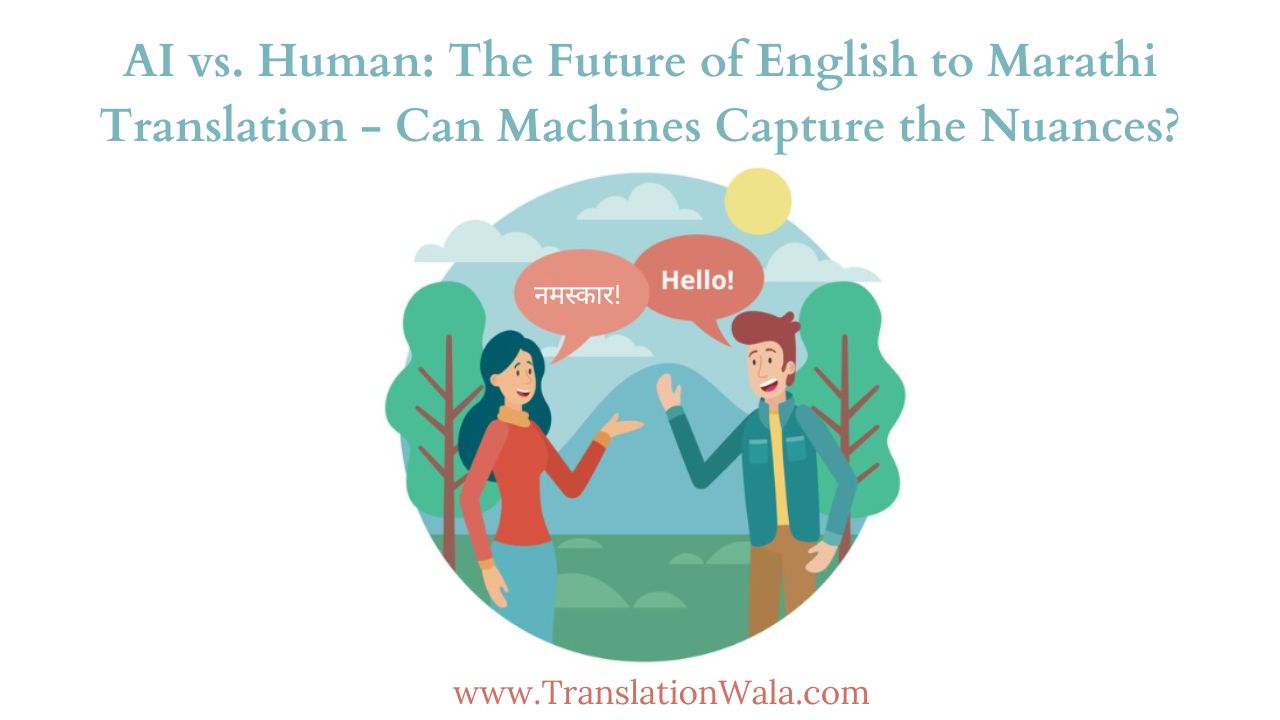English to Marathi Translation: English’s old tune, with its sonnets by Shakespeare and tweets from today, meets Marathi’s lively beat, with its lines from Tukaram and the busy talk of the streets of Mumbai. Translation has been the careful art of linking these two languages, which are as different as the societies they come from, for hundreds of years. But in this digital world, Artificial Intelligence (AI) has come into the game as a new opponent. Is it possible for AI, with its cold logic and mathematical accuracy, to really understand what it means to translate, where cultural context and sensitivity speak between the lines?
The Enigma of Marathi: Homophones, Dialects, and the Untamed Spirit
Marathi is hard for AI translators to understand because it has a lot of literary history and its own strange grammar rules. There are many homophones in the language, which are words that sound the same but have different meanings. These can confuse even the smartest programs. “वाघ” (vagh) is a Marathi word that can mean “tiger,” “tiger skin,” or even “a strong desire” based on the situation. An AI that doesn’t have the ability to understand context like humans might get this word mixed up, which could lead to versions that don’t make sense or are even false.
Also, regional accents and slang words have a big impact on Marathi, as they do on many other Indian languages. These subtleties, which are often not written down and changeable, are what make spoken language work. If you only teach an AI interpreter normal written Marathi, it might miss the small changes in meaning that happen in daily speech, making your versions sound stiff and awkward. Imagine turning the chatter of a Mumbai street seller into a formal business paper. The machine would make the language sound so dry and formal that it would lose its meaning.
Also Read: Expert English to Marathi Translation Will Help You Go Global
The Human Touch: Cultural Nuances and Creative Interpretation
The person translating, on the other hand, has a lot of real-life experience and knowledge of other cultures. They know how to deal with homophones, figure out regional slang, and understand the emotional undertones of a text. This makes sure that the translated version not only says what the original meant, but also gets its spirit. This is especially important when adapting literature, because the voice of the author and the societal background are built into the language itself. It would be like trying to translate Tukaram’s religious poems without knowing the spiritual roots of the bhakti movement. The words might still be there, but the beauty would be gone.
But AI does have some good points as well. Being able to handle huge amounts of data means that translation systems can always be made better. Machine learning can help AI translators find trends and subtleties that a person might miss. This can lead to more accurate and consistent readings over time. AI tools can also be very helpful for jobs like pre-translation and researching terms, which frees up human translators to work on more complex analysis and artistic expression.
The Symphony of Collaboration: Harnessing the Strengths of Both
So, the future of English to Marathi Translation is not a fight between machines and people, but a union of the two. AI can provide the raw power and speed, but human translators bring important cultural understanding and artistic style to the table. We can make versions that are not only correct but also true to the spirit of the source language by using the best parts of both.
This work together could open up exciting new options. Imagine AI-powered tools that help human translators learn about regional languages, come up with alternative versions for tricky parts, or even find cultural references that could get lost in translation. This improved translation process can not only make texts better, but it can also give human interpreters the freedom to explore new ways of creatively interpreting words.
Also Read: Unlocking Assamese Information – A Comprehensive Guide to English to Assamese Translation
Beyond Accuracy: Preserving the Melody and the Rhythm
If you want to know if AI can English to Marathi Translation accurately, the real question is not “if,” but “how.” We can make sure that the future of translation is not only useful, but also rewarding, by utilizing the unique strengths of both people and computers. This will protect the beauty and complexity of languages like Marathi while making them available to a larger global audience.
